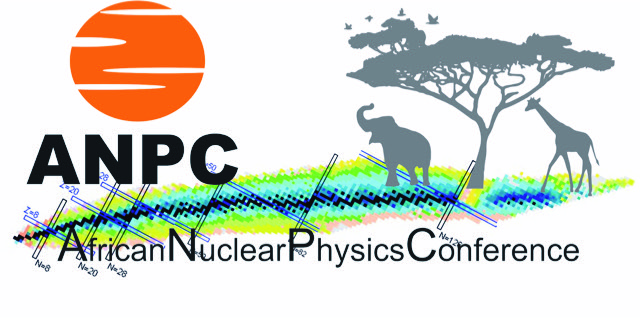Speaker
Description
The Pygmy Dipole Resonance (PDR) is an electric dipole excitation below and around the particle separation threshold [1]. It may be understood, in a macroscopic picture, as a neutron skin oscillation against an isospin-saturated core. Such additional dipole strength on top of the low-energy tail of the Giant Dipole Resonance (GDR) can have a great impact on reaction rates within nuclear synthesis processes, e.g., the rapid neutron-capture process [2,3]. Therefore, it is important to deepen our understanding of the PDR with systematic experimental and theoretical studies.
The so-called Nuclear Resonance Fluorescence (NRF) or photon scattering method is a commonly used experimental approach to study the low-lying dipole response of atomic nuclei [4]. The nuclei are excited from the ground state to an excited state via the absorption of a γ quantum. Due to the fact that photons transfer only small angular momenta, predominantly dipole and with a lower probability quadrupole transitions are excited. The subsequently emitted γ-ray of the de-excitation back to the ground state or to an energetically lower-lying excited state contains information about the level lifetimes, γ-decay branching ratios and spin and parity quantum numbers.
In general, there are two complementary kinds of NRF experiments. Continuous photon sources can be used to investigate a large energy region at once and to determine absolute transition strengths and spin quantum numbers due to the angular distribution of the emitted radiation. Such studies can be performed at, e.g., the bremsstrahlung facilities DHIPS [5] and γELBE [6]. Linearly polarized, quasi-monoenergetic γ-ray beams allow to selectively study excited states in a narrow energy range. In these experiments, branching ratios to lower-lying states can be identified and unresolved strength can be investigated due to the absence of the bremsstrahlung background. Additionally, the polarization in the entrance channel has the advantage that besides the spin quantum number also the parity quantum number can be determined. Such photon beams are provided at HIγS [7] and the upcoming ELI-NP facility [8].
After presenting the NRF technique and available experimental setups relevant for the investigation of the PDR, various results will be discussed.
This work is supported by the BMBF (05P18PKEN9).
[1] D. Savran, T. Aumann, and A. Zilges, Prog. Part. Nucl. Phys. 70 (2013) 210.
[2] S. Goriely, Phys. Lett. B 436 (1998) 10.
[3] E. Litvinova et al., Nuclear Phys. A 823 (2009) 26.
[4] U. Kneissl, H.H. Pitz, and A. Zilges, Prog. Part. Nucl. Phys. 37 (1996) 349.
[5] K. Sonnabend et al., NIM A 640 (2011) 6-12.
[6] R. Schwengner et al., NIM A 555 (2005) 211.
[7] H.R. Weller et al., Prog. Part. Nucl. Phys. 62 (2009) 257.
[8] C.A. Ur et al., Rom. Rep. Phys. 68 (2016) S483.

